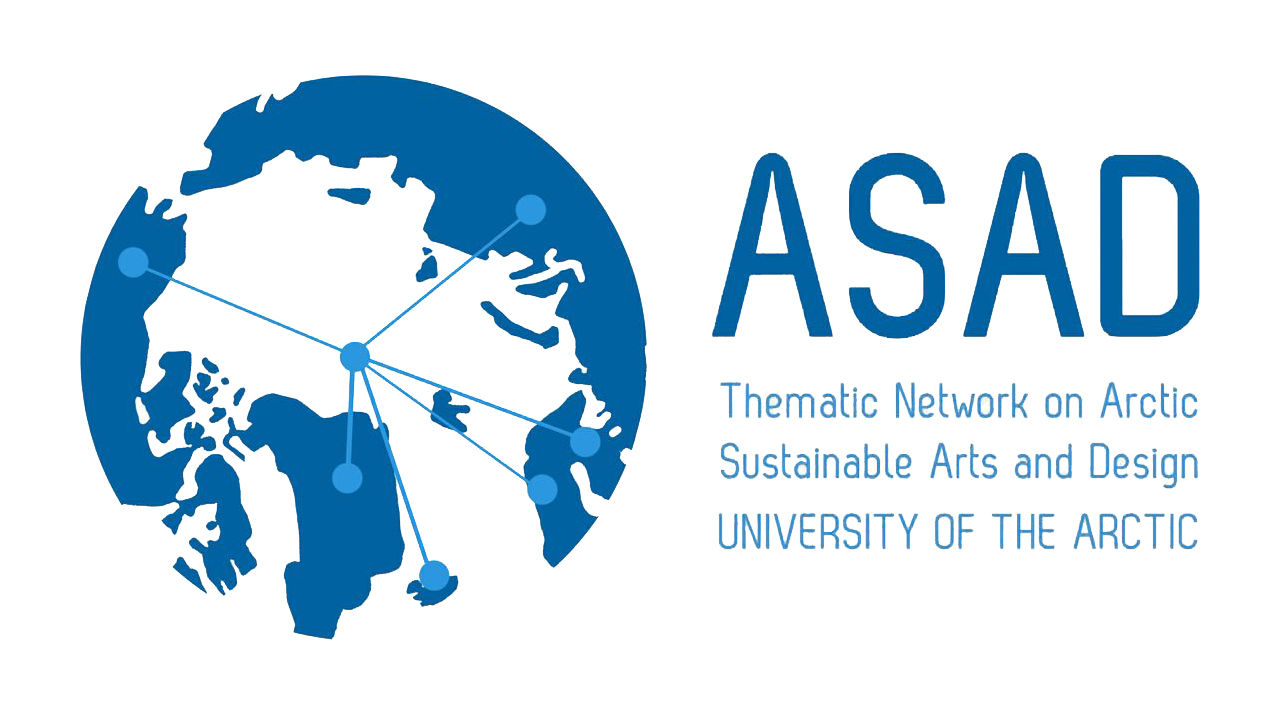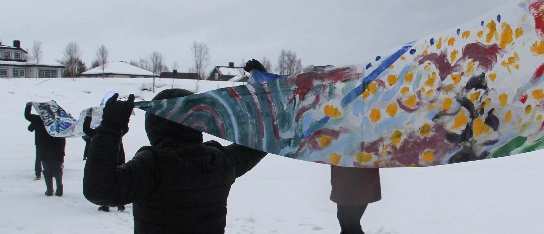New Genre Arctic Art Education (AAE) is an collaborative initiative of the Thematic Networks on Arctic Sustainable Art and Design and Visual Culture Education (ASAD) and Children of the Arctic to develop culturally, socially, and ecologically sustainable art education that takes into account the changing conditions of the northern regions. AAE is coordinated by University of Lapland and it utilizes the Nomadic Hub of Arctic Art Education as a key tool for working with the North and the Arctic.
For the researchers, artists and teachers from participating circumpolar universities, this initiative serves as a platform for the development and research of Arctic art education. For university students, it is an international course that begins with distance learning and culminates in on-site fieldwork as artistic activity. In addition to universities cross-sectoral partners contribute their specialized expertise to support academic collaboration. This adaptable event, tailored to situations and community needs, is held annually in different locations across the Arctic and northern regions.
- Working with communities is valuable because it helps to understand the ways of knowing in Northern eco-cultural contexts, whereby encounters can lead to new understandings not only in art but also in the pursuit of sustainability transitions, states the project’s responsible leader, Professor, UArctic Chair Timo Jokela.
For local residents, the events provide an opportunity to encounter contemporary art methods and to be involved in the creation of works and pop-up exhibitions resulting from the events.
- The central goal is to integrate diverse and creative working methods of contemporary art with the tradition of northern knowledge and skills in a sustainable manner in the spirit of New Genre Arctic art, Jokela continues.
In Karajok, on the Sámi region of Norway, key local partners for the AAE was the Sámi Center for Contemporary Art (Sámi Dáiddaguovddáš) and the Karasjok School. In addition to the University of Lapland, the event was also supported by Umeå University from Sweden, Nord University from Norway, and the University of Greenland. External partners included the multidisciplinary art association Piste from Rovaniemi and the artist and social psychology association Siunissag from Greenland.
The Karasjok Nomadic Hub of Arctic Art Education was made possible through funding from Nordplus Horizontal 2023 and the Arctic University’s research and education network fund supported by the Danish Ministry of Higher Education and Science.
More information:
Timo Jokela
Professor, University of Lapland
UArctic Chair of Art, Design and Culture, UArctic
timo.jokela@ulapland.fi
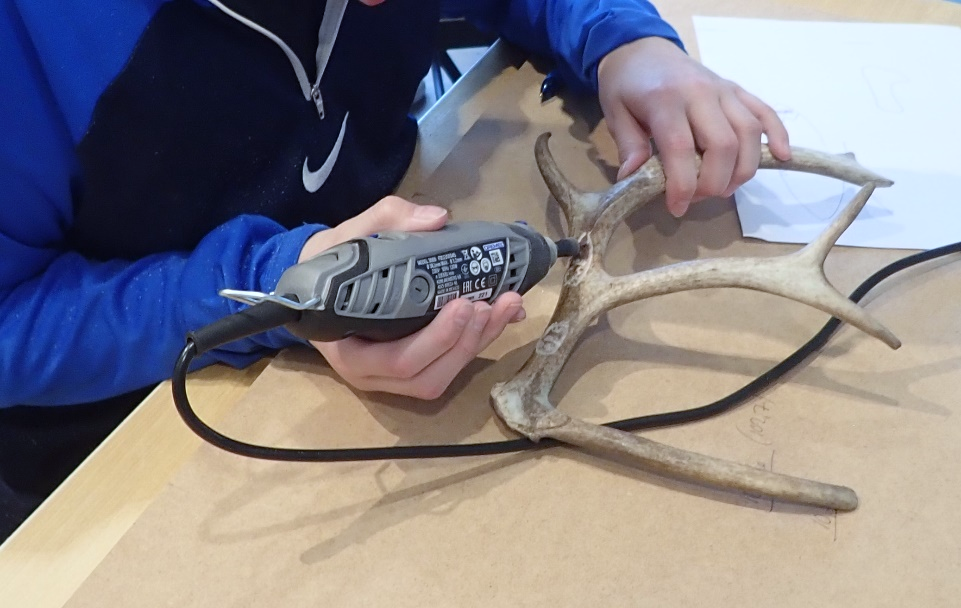
Encounters between northern eco-culture and contemporary art. Personal reindeer earmarks and youngsters climate thoughts are carved into a reindeer horn, which becomes a part of the shared artwork, installation Climate Thoughts Lavvu. Photo: Timo Jokela, 2024.
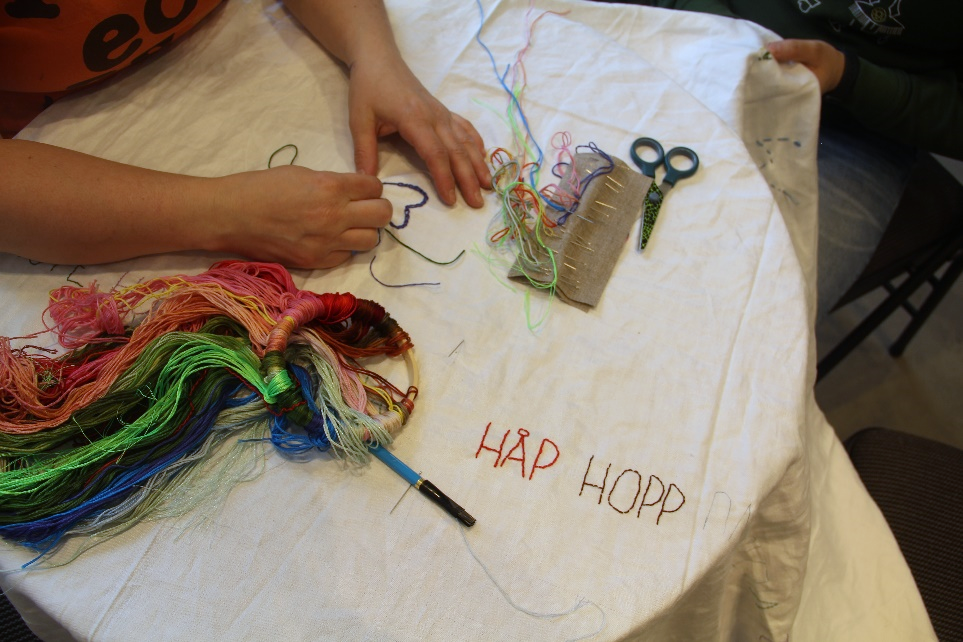
Borderlines between traditional craftsmanship and contemporary art. Multilingual future hopes are embroidered onto a tablecloth with colorful threads. Photo: Timo Jokela, 2024
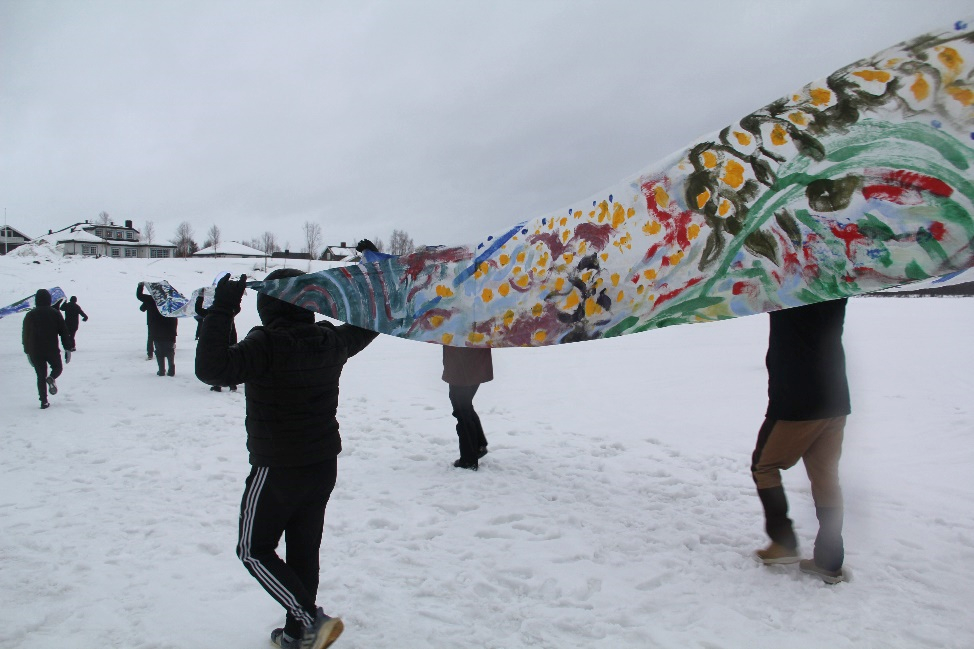
The group paintings inspired by the paintings of the artist Per Adde, displayed at the Art Center, and the meanings, rhythms, and seasonal colors of the important river to the local community, are transported onto the ice of the Karasjok River for a Snowmobile painting performance. Photo: Timo Jokela, 2024.
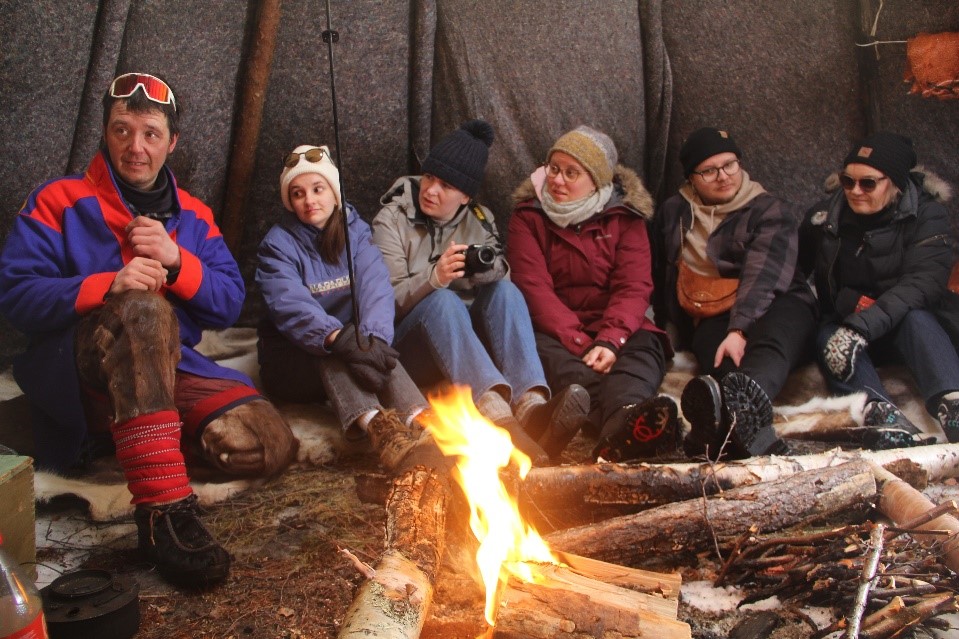
In encounters such as museum visits, Sámi Parliament gatherings, and visits to the Laavu, the ecological-cultural dimensions and plurality of life in Karajoki were explored. Photo: Timo Jokela, 2024.
